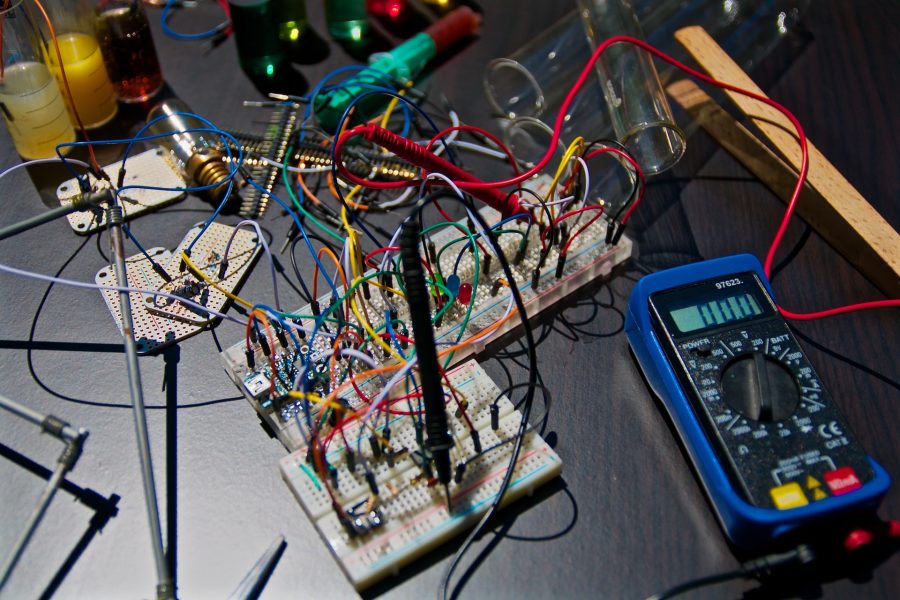What is the Working Principle of a Coreless Clamp-on Current Probe?
What Kind of Electrical Instrument is a Current Probe?
A current probe is a device that helps quantify and assess the value of a current. It estimates the number of amperes that flow or move through a conducting material or substance. The conductor can be a wire, coil, rod, appliance, or other similar pieces of machinery.
Also known as a current clamp and a current meter, a current probe gets used primarily to compute and measure the magnitude of the alternating current (AC). It flows through any of the mentioned conductors. The electrical instrument can also calculate and determine the waveform and phase changes of the parameter. A few developed and specialized models and kinds of current prove can assess the magnitude of the direct current (DC). It can so do irrespective of the conducting substance or constituent through which the element flows.
A current probe comes with a specialized construction. It entails jaws that help the electrical instrument take readings and measurements without initiating any physical contact. These jaws wound or clamp around the body or surface of the conductor. It stands true during the measurement process without touching it at any point.
A current probe is exceedingly flexible in its usage and application, having a broad range of both. For this very reason, it can get used in multiple sectors, industries, domains, and fields. The electrical instrument offers a safe and high accuracy reading and can find application almost anywhere and in any situation.
What Kind of Electrical Instrument is a Coreless Clamp-on Current Probe?
As the name indicates and implies, a coreless clamp-on current probe does not have a core integrated and incorporated in it. This unique type of construction has varied applications. It has features similar to that of a flexible current meter model or version. In other cases, the functions of the electrical instrument resemble that of a Rogowski coil current clamp. Nevertheless, it has few distinct disparities and differences.
A coreless clamp-on current probe can get used in different and unique types and varieties of magnetic sensors. It works to find and determine the measurements and readings of their functions. The instrument does so in the place and stead of a core. In other cases, a coreless clamp-on current probe can help gauge, compute, and assess the direction and value of a magnetic field. It generally does so for the one that gets generated due to the current. It flows through the conducting constituent or substance and creates the magnetic field at a few specific points.
A coreless clamp-on current probe finds application in computing and gauging the magnitude of the output signal and the values associated with a total magnetic field. The first parameter is proportional to the current that flows through the conductor.
What is the Working Principle that a Coreless Clamp-on Current Probe Follows to Operate?
A coreless clamp-on current probe operates on the rules and principles associated with electromagnetic induction. Its working is exceedingly similar to that of the other current meters but with subtle yet significant differences. The advances and postulates of the theory suggest that a conductor develops a particular value of magnetic flux in it. It takes place when a current passes or moves through it. This movement leads to the generation of a magnetic field that forms around the conducting substance.
A coreless clamp-on current probe comes with a few magnetic field sensors. They remain attached to various parts of the electrical instrument across the surface and perimeter. These sensors aid in computing the value or magnitude of the created and generated magnetic field. The resulting and total sum of the intensity and strength of the parameters give an evaluation. It is the calculation and estimation of the voltage signal. These types of current clamps perform this calculation for the ones at the output.
What are the Advantageous and Beneficial Points of Using a Coreless Clamp-on Current Probe?
A coreless clamp-on current probe provides a colossal number of advantages and benefits in terms of usage and application. These electrical instruments aid substantially in measurements and computations of the magnitude of a current. This parameter or element can flow or pass through any conducting substance or constituent. The device also calculates the value of the magnetic field associated with the current.
A coreless clamp-on current probe does not have a core integrated into it. This feature helps to reduce the overall weight of the electrical instrument and makes it lightweight. It permits the users to carry and hold the device effortlessly without putting any pressure and strain on their hands. In addition to that, the coreless clamp-on current probe has an ergonomic design with a handle that fits seamlessly even with the presence and usage of protective gear.
A coreless clamp-on current probe comes with a compact footprint. The small dimensions and size of the electrical appliance allow it to fit in places and areas that are narrow. Even in such locations, the device can take readings and computations of high accuracy and precision.
Since a coreless clamp-on current probe does not have a core, the need to suture it disappears. It increases the longevity of the electrical appliance and ensures that it does not sustain heavy and irreparable damages. The device can serve as an alternate solution to multimeters in particular circumstances. It can be when the measurements need to get taken for appliances that are under active use. In such cases, they have to remain connected to live power and electricity supply. In other words, a coreless clamp-on current probe can work without cutting off the resource. Thus, it ensures the safety and a hazardless setting during the measurements.
A coreless clamp-on current probe can work even in harsh and adverse conditions. It allows it to find applications at any time and in various flexible areas. The electrical instrument can withstand and work with high levels of disturbances created by noises and electricity. It can also operate without suffering from the influence of magnetic hysteresis.
Share It on :





